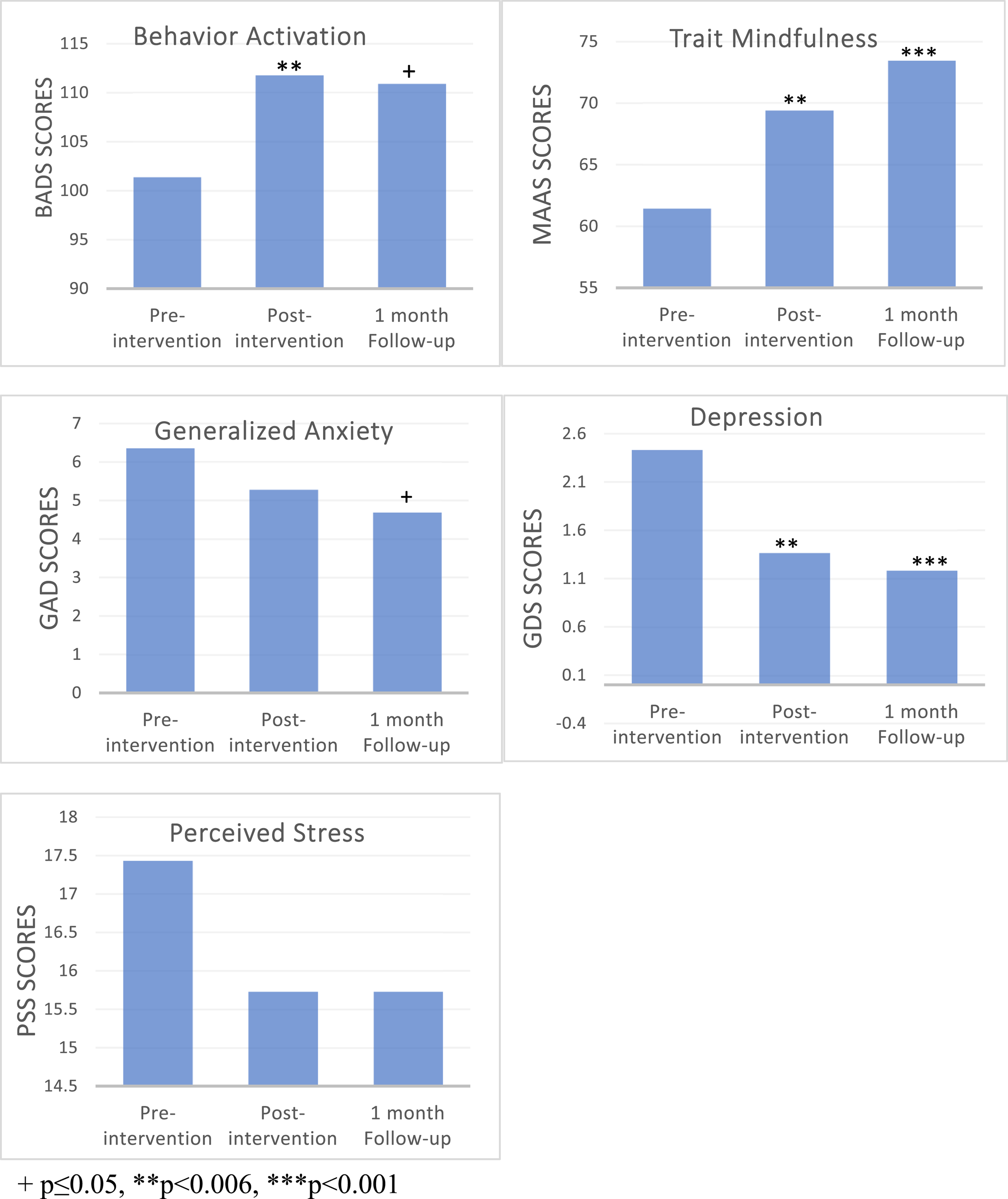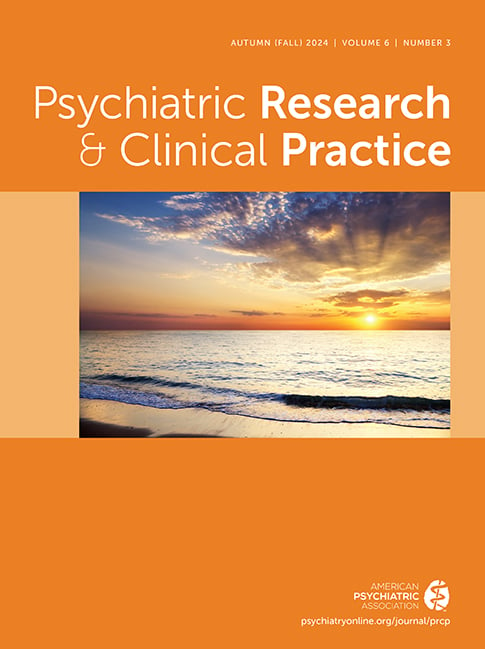Adapting Virtual Reality‐Based Mental Health Interventions for Equitable Global Use: Proof of Concept
METHODS
Tailoring the Intervention for the Study Population and Location
Intervention Sessions
Outcomes
Attrition and Acceptability
Clinical Outcomes
Statistical Analysis
RESULTS
Attrition and Acceptability
Psychological Measures

| N | Minimum | Maximum | Mean | Std. deviation | |
|---|---|---|---|---|---|
| GDS pre‐intervention | 28 | 0.00 | 7.00 | 2.43 | 1.85 |
| GDS post‐intervention | 22 | 0.00 | 4.00 | 1.36** | 1.33 |
| GDS follow‐up | 22 | 0.00 | 4.00 | 1.18*** | 1.22 |
| BADS pre‐intervention | 28 | 65.00 | 130.00 | 101.36 | 17.14 |
| BADS post‐intervention | 22 | 87.00 | 131.00 | 111.73** | 11.30 |
| BADS follow‐up | 22 | 80.00 | 137.00 | 110.85+ | 15.61 |
| MAAS pre‐intervention | 28 | 29.00 | 85.00 | 61.43 | 13.64 |
| MAAS post‐intervention | 22 | 51.00 | 90.00 | 69.36** | 11.03 |
| MAAS follow‐up | 22 | 45.00 | 89.00 | 73.41*** | 11.08 |
| GAD7 pre‐intervention | 28 | 1.00 | 17.00 | 6.36 | 3.85 |
| GAD7 post‐intervention | 22 | 0.00 | 11.00 | 5.27 | 2.85 |
| GAD7 follow‐up | 22 | 0.00 | 15.00 | 4.68+ | 3.92 |
| PSS pre‐intervention | 28 | 6.00 | 27.00 | 17.423 | 5.71 |
| PSS post‐intervention | 22 | 6.00 | 27.00 | 15.73 | 5.66 |
| PSS follow‐up | 22 | 6.00 | 28.00 | 15.73 | 5.86 |
DISCUSSION
Clinical Implications
Footnotes
REFERENCES
Information & Authors
Information
Published In
History
Authors
Funding Information
Metrics & Citations
Metrics
Citations
Export Citations
If you have the appropriate software installed, you can download article citation data to the citation manager of your choice. Simply select your manager software from the list below and click Download.
For more information or tips please see 'Downloading to a citation manager' in the Help menu.
View Options
View options
PDF/EPUB
View PDF/EPUBLogin options
Already a subscriber? Access your subscription through your login credentials or your institution for full access to this article.
Personal login Institutional Login Open Athens loginNot a subscriber?
PsychiatryOnline subscription options offer access to the DSM-5-TR® library, books, journals, CME, and patient resources. This all-in-one virtual library provides psychiatrists and mental health professionals with key resources for diagnosis, treatment, research, and professional development.
Need more help? PsychiatryOnline Customer Service may be reached by emailing [email protected] or by calling 800-368-5777 (in the U.S.) or 703-907-7322 (outside the U.S.).
